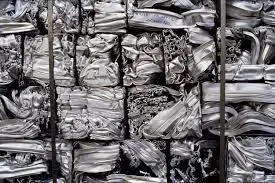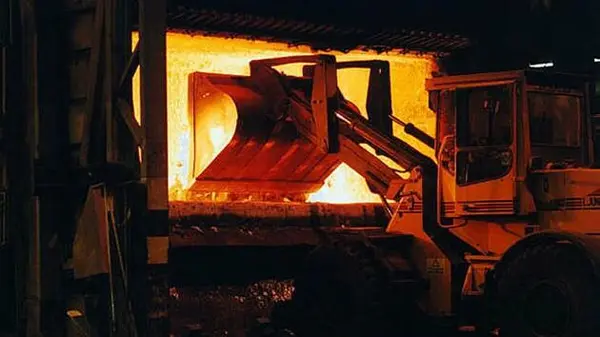Challenges and solutions
In 1967, Naco and Nordisk became part of the state-owned aluminum company ÅSV, and in 1986 ÅSV and Norsk Hydro were merged. With Norsk Hydro on the owner side, efforts were made to market and an international expansion. Hydro established itself in the aluminum industry in 1963, when they merged with the American company Harvey in Karmøy. In 1975, Hydro bought out the Americans and became the largest metal production company in Europe. In addition, the company was also the largest on the continent in terms of press works. Hydro used capital from its oil-related operations to acquire several of Alcan and Alcoa's crisis-hit press works in Europe in the late 1970s.
Hydro Aluminum focused on strengthening its position in rolling, bauxite extraction and oxide production. The rolling mills at Karmøy and Holmestrand were the company’s only rolling mills. Profitability was greatest in Karmøy, and Nordisk, now called Hydro Aluminum Holmestrand, was now in a pressed situation. The company therefore underwent major reorganizations and the number of employees was reduced as a result of automation. The production department now had a different function than taking care of raw aluminum and the main research and development center. Instead, production was concentrated around rolling and varnishing of strips, and at the same time the factory was again involved in collaboration with Norwegian and foreign research communities. By the transition to the 1990s, productivity in Holmestrand had doubled, but production costs were nevertheless considered to be too high.
- 1/1
Aluminum is not just aluminum, but consists of a number of alloys. Photo: Thinkstock.
The Holmestrand factory chose one particular strategy, but instead focused on all of them. By doing so, the company's role as a knowledge center in metallurgy and surface treatment came to be of great importance for many years.
The factory's combined expertise from all stages of production made it possible to experiment with new methods in casting, rolling and laqcuering. In 1992, a new plant with a recycling capacity of 90,000 tonnes was in place, and in 1994 it was evident that the aluminum industry in Holmestrand could continue.
- 1/1
Remelting of metal in Holmestrand. Photo: Norsk Hydro.
Hydro Aluminum Holmestrand was now developed into a pure intermediate products manufacturer. What was left of the kitchenware and milk container production, including roll-bonds for freezers and refrigerators, were ousted and production in Holmestrand was discontinued in 1996. Instead, Hydro focused on developing products based on customer needs and providing technical support and follow-up. Eventually, Hydro Aluminum Holmestrand was able to produce materials with traits that the market demanded.
An example of the market orientation was the development of a specially adapted material for heat exchangers for the automotive industry. Hydro's mills made up a large part of the market, and production was a stable profit for the mill in Holmestrand. However, new methods of rolling and surface treatment made building materials based on recycled aluminum the largest area of focus.
The transition to production based on remelted scrap in Holmestrand was made possible through a national research collaboration consisting of the Research Council, NTNU and in particular Sintef. Norsk Hydro's strategic change entailed not only increased refining and recycling, but also increasing internationalization of aluminum operations. At the end of the 1990s, the company looked to the European aluminum companies with the intent to merge or acquire. In 2002, Hydro succeeded in acquiring the former German state-owned Vereinigte Aluminium Werke (VAW). The acquisition made Hydro one of the largest aluminum companies in the world. By the time Hydro acquired the Brazilian mining company Vales, the company was finally an integrated global company.
The investments abroad does not mean that Norwegian metalworks are not prioritized and modernized. The company has invested heavily in what is the world's most energy-efficient aluminum plant in Karmøy. This shows that better environmentally adapted aluminum production is a key part of the company's innovation and production strategy. Today Hydro operates only with aluminum, and the factory in Holmestrand is a part of this. Recycling is Hydro Holmestrand's green profile, and the factory has established itself as a respected supplier of lacquered products based on recycled aluminum. Despite major reductions, far more tonnes of products are being shipped from Holmestrand than in the early 1980s. The demand for recycled materials is increasing, and the factory supplies materials for packaging, tealights and car signs in addition to building materials. Hydro Holmestrand, as it is called today, is capable of rolling 90,000 tonnes and has a remelting capacity of 100,000 tonnes. Building materials from Holmestrand is often pressurized at the construction site and is part of spectacular buildings around the world. Examples of this are the Beijing and Gardermoen airports, and major sports arenas in Romania and Brazil and large buildings for the London Olympics.
- 1/1
From the airport in Beijing. Photo: Fostner + Partners.
Satsingen på resirkulering i Holmestrand var motivert ut fra økonomiske hensyn, og etter oppkjøpet av VAW kan det synes merkelig at Hydro har beholdt et lite verk som Hydro Holmestrand. Forklaringen må ligge i utviklingen av teknologi for omsmelting av skrap, samt at bedriften er godt integrert med støpning, valsing og lakkering innenfor et lite geografisk område. Det gjør bedriften mer fleksibel enn de de store tyske verkene. Samtidig gjør klimautfordringene miljøaspektet stadig viktigere.
Produksjonsmessig handler det om lavere energiforbruk og det faktum at omsmelting ikke er basert på bauksitt og raffinering av oksid. Resirkulerte materialer kan dermed markedsføres som enda «grønnere» enn primærmetall framstilt med vannkraft. Slik sett er Hydro Holmestrand eksempel på at vellykket industriproduksjon ikke bare krever stordriftsfordeler og kostnadsbevissthet, men også at lange tradisjoner, kompetanse, fleksibilitet og ansvarliggjøring kan være avgjørende.


